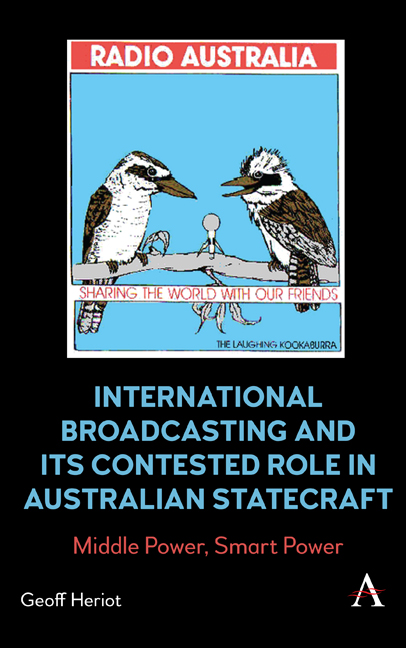 International Broadcasting and Its Contested Role in Australian Statecraft
International Broadcasting and Its Contested Role in Australian Statecraft Book contents
- Frontmatter
- Dedication
- Contents
- List of Figures
- Foreword
- Acknowledgements
- Chapter One Introduction
- Chapter Two Media and the Contest of Ideas
- Chapter Three International Broadcasting and Its Discursive Properties
- Chapter Four Mobilising ‘Softer’ Power in a Hard World
- Chapter Five Australia’s ABC: State Interests, National Evolution
- Chapter Six Purpose, Performance and Evaluation
- Chapter Seven Modernising the ABC
- Chapter Eight Policy, Priorities and Qualified Independence
- Chapter Nine Engaging with Intercultural Audiences
- Chapter Ten Indonesia, the Crucible
- Chapter Eleven Strategic Contingency and War
- Chapter Twelve Looking to the New Disorder
- Index
Chapter Nine - Engaging with Intercultural Audiences
Published online by Cambridge University Press: 15 November 2023
- Frontmatter
- Dedication
- Contents
- List of Figures
- Foreword
- Acknowledgements
- Chapter One Introduction
- Chapter Two Media and the Contest of Ideas
- Chapter Three International Broadcasting and Its Discursive Properties
- Chapter Four Mobilising ‘Softer’ Power in a Hard World
- Chapter Five Australia’s ABC: State Interests, National Evolution
- Chapter Six Purpose, Performance and Evaluation
- Chapter Seven Modernising the ABC
- Chapter Eight Policy, Priorities and Qualified Independence
- Chapter Nine Engaging with Intercultural Audiences
- Chapter Ten Indonesia, the Crucible
- Chapter Eleven Strategic Contingency and War
- Chapter Twelve Looking to the New Disorder
- Index
Summary
Throughout much of the 1980s, a gap persisted between the lead factor of Radio Australia’s policy intent and lag elements of organisational culture; the broadcaster’s internal organisation and resources management failed to ‘adequately reflect these priorities’ (ABC 1989b, p. 2). This chapter moves from the purposive intent of government-approved priorities to discussion of how Radio Australia implemented and expressed them. In reaching out to target audiences, the broadcaster’s conduct pertained to the three key success factors proposed in Chapter 6: balancing state interests with its editorial and administrative independence; its performance in reaching and bargaining for engagement with intercultural audiences; and the impact of legislative provisions, organising principles and professional practices as performance enablers or impediments. Internal conflicts centred principally on two functional strands: news and current affairs and, more broadly, the relationship between English and foreign language work units and their production norms.
The process of bargaining with audiences for their attention and engagement comprised four principal elements as discussed in Chapter 3: establishing the sense of a shared experience or common lifeworld; the cultural affinity between broadcaster and audience; the development of parasocial relationships through the broadcaster’s style and personality; and its adopted editorial/programming outlook. The detail of editorial and programming policies, decisions about agenda-setting and the framing of news and current affairs coverage, established the symbolic meaning and political import of its regional outlook. Radio Australia boasted a recognisable and respected profile in strategically important nations of Asia and the Pacific even though its editorial outlook and performance suffered from organisational impediments.
Radio Australia’s Perceived Identity
In 1985, the chief executives or senior executive representatives of international broadcasters from 10 Asian nations compared the profiles and ‘personalities’ of radio services competing in the region (Heriot 1985). Although not founded on empirical market research, their characterisations were indicative of positioning and perceived attributes. The 10 delegates, along with observers from the German, French and Australian inter-national services, held a seminar on external broadcasting at the Asia–Pacific Institute for Broadcasting Development (AIBD) in Kuala Lumpur (Heriot 1985).
- Type
- Chapter
- Information
- International Broadcasting and Its Contested Role in Australian StatecraftMiddle Power, Smart Power, pp. 165 - 190Publisher: Anthem PressPrint publication year: 2023


